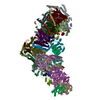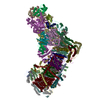+Search query
-Structure paper
| Title | Resting mitochondrial complex I from adopts a helix-locked state. |
|---|---|
| Journal, issue, pages | Elife, Vol. 12, Year 2023 |
| Publish date | Mar 23, 2023 |
 Authors Authors | Abhilash Padavannil / Anjaneyulu Murari / Shauna-Kay Rhooms / Edward Owusu-Ansah / James A Letts /  |
| PubMed Abstract | Respiratory complex I is a proton-pumping oxidoreductase key to bioenergetic metabolism. Biochemical studies have found a divide in the behavior of complex I in metazoans that aligns with the ...Respiratory complex I is a proton-pumping oxidoreductase key to bioenergetic metabolism. Biochemical studies have found a divide in the behavior of complex I in metazoans that aligns with the evolutionary split between Protostomia and Deuterostomia. Complex I from Deuterostomia including mammals can adopt a biochemically defined off-pathway 'deactive' state, whereas complex I from Protostomia cannot. The presence of off-pathway states complicates the interpretation of structural results and has led to considerable mechanistic debate. Here, we report the structure of mitochondrial complex I from the thoracic muscles of the model protostome . We show that although complex I (-CI) does not have a NEM-sensitive deactive state, it does show slow activation kinetics indicative of an off-pathway resting state. The resting-state structure of -CI from the thoracic muscle reveals multiple conformations. We identify a helix-locked state in which an N-terminal α-helix on the NDUFS4 subunit wedges between the peripheral and membrane arms. Comparison of the -CI structure and conformational states to those observed in bacteria, yeast, and mammals provides insight into the roles of subunits across organisms, explains why the -CI off-pathway resting state is NEM insensitive, and raises questions regarding current mechanistic models of complex I turnover. |
 External links External links |  Elife / Elife /  PubMed:36952377 / PubMed:36952377 /  PubMed Central PubMed Central |
| Methods | EM (single particle) |
| Resolution | 3.3 - 3.4 Å |
| Structure data | EMDB-28581, PDB-8esw: EMDB-28582, PDB-8esz: |
| Chemicals | 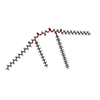 ChemComp-CDL:  ChemComp-ZN: 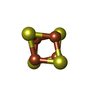 ChemComp-SF4: 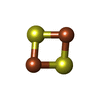 ChemComp-FES: 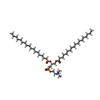 ChemComp-PC1: 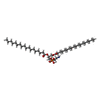 ChemComp-3PE: 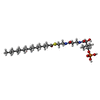 ChemComp-ZMP: 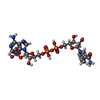 ChemComp-NDP:  ChemComp-FMN: 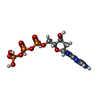 ChemComp-DGT: 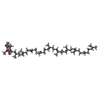 ChemComp-U10: 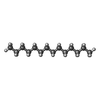 ChemComp-C14: 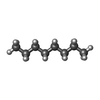 ChemComp-OCT: 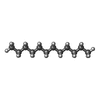 ChemComp-D12:  ChemComp-WSF: |
| Source |
|
 Keywords Keywords | OXIDOREDUCTASE / NADH:ubiquinone oxidoreductase / TRANSLOCASE |
 Movie
Movie Controller
Controller Structure viewers
Structure viewers About Yorodumi Papers
About Yorodumi Papers




